To close the Jubilee 2025, in Rome the Mercati di Traiano - Museo dei Fori Imperiali will host from October 9, 2025 to February 1, 2026 the exhibition 1350. The Jubilee without a Pope, an exhibition that invites visitors to rediscover the Rome of the Middle Ages, including devotion, art, politics and society. Curated by Claudio Parisi Presicce, Nicoletta Bernacchio, Massimiliano Munzi and Simone Pastor, the exhibition is promoted by Roma Capitale, Assessorato alla Cultura, Sovrintendenza Capitolina ai Beni Culturali, with the organization of Zètema Progetto Cultura.
The exhibition brings together about sixty works, including statues, paintings, epigraphs, coins, seals, manuscripts, bas-reliefs, devotional objects and rare historical documents. Many of these exhibits, never before shown to the public, come from important Italian and international institutions, as well as from Capitoline collections. Set up in the Great Hall on the ground floor of the Mercati di Traiano, the exhibition is divided into eight thematic sections that tell the story of the complex season of the second Jubilee in history, celebrated in 1350 at a time of transition for the city, which was deprived of the pontiff’s presence.
The itinerary opens with the figure of Boniface VIII Caetani, promoter of the first Jubilee in 1300. His family owned the Castello delle Milizie, with the imposing Tower built between the 12th and 13th centuries by incorporating the Mercati di Traiano. The pontiff’s coat of arms appears on the ancient measures for oil and wine used by the Municipality of Rome, established in 1143, to ensure the regularity of trade. Among the rarest evidence of the symbols of the medieval city is the plan of Rome in the shape of a lion, contained in the Liber Ystoriarum Romanorum, a late 13th-early 14th-century codex, which is present in the exhibition with a reproduction.
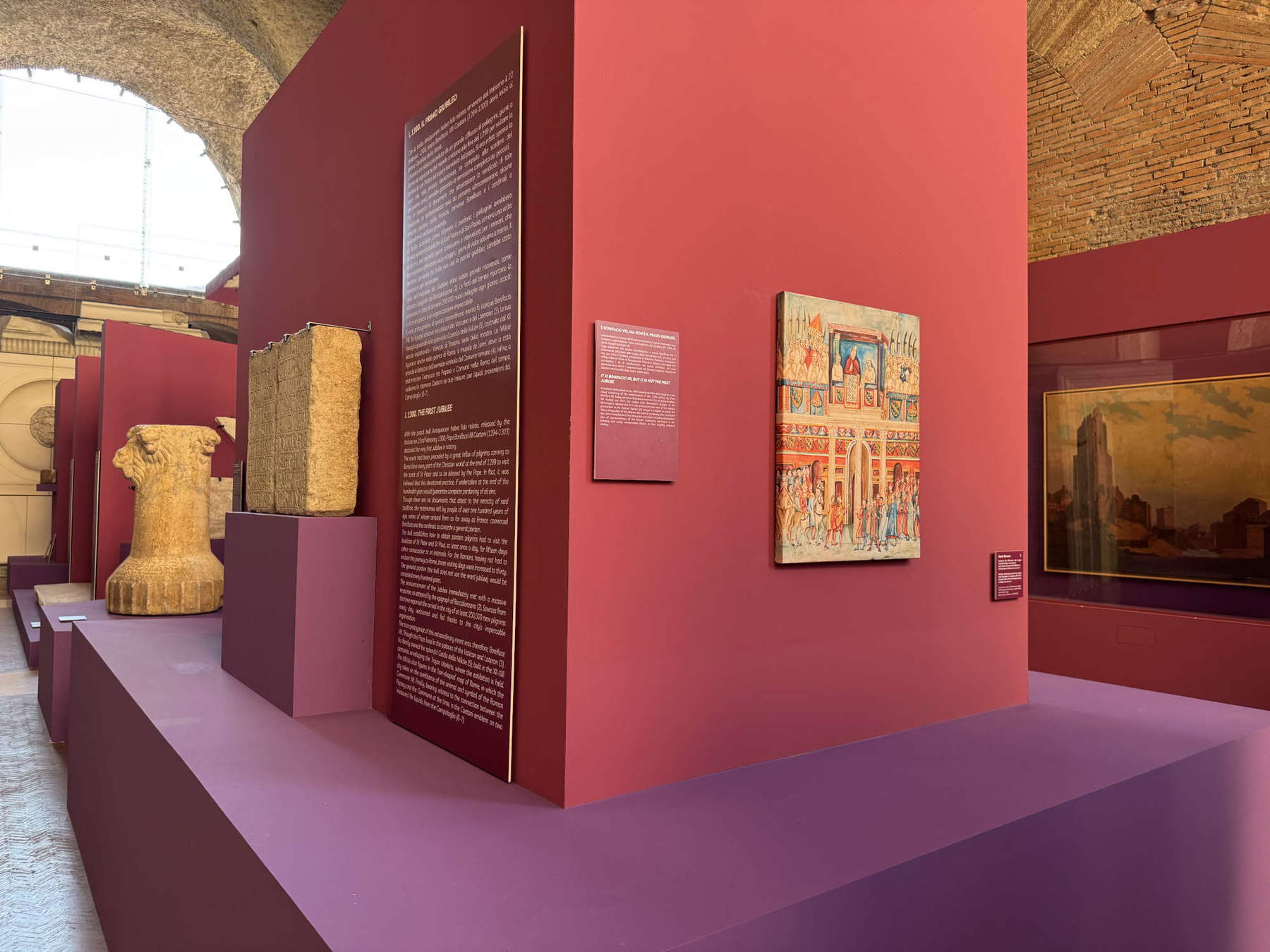
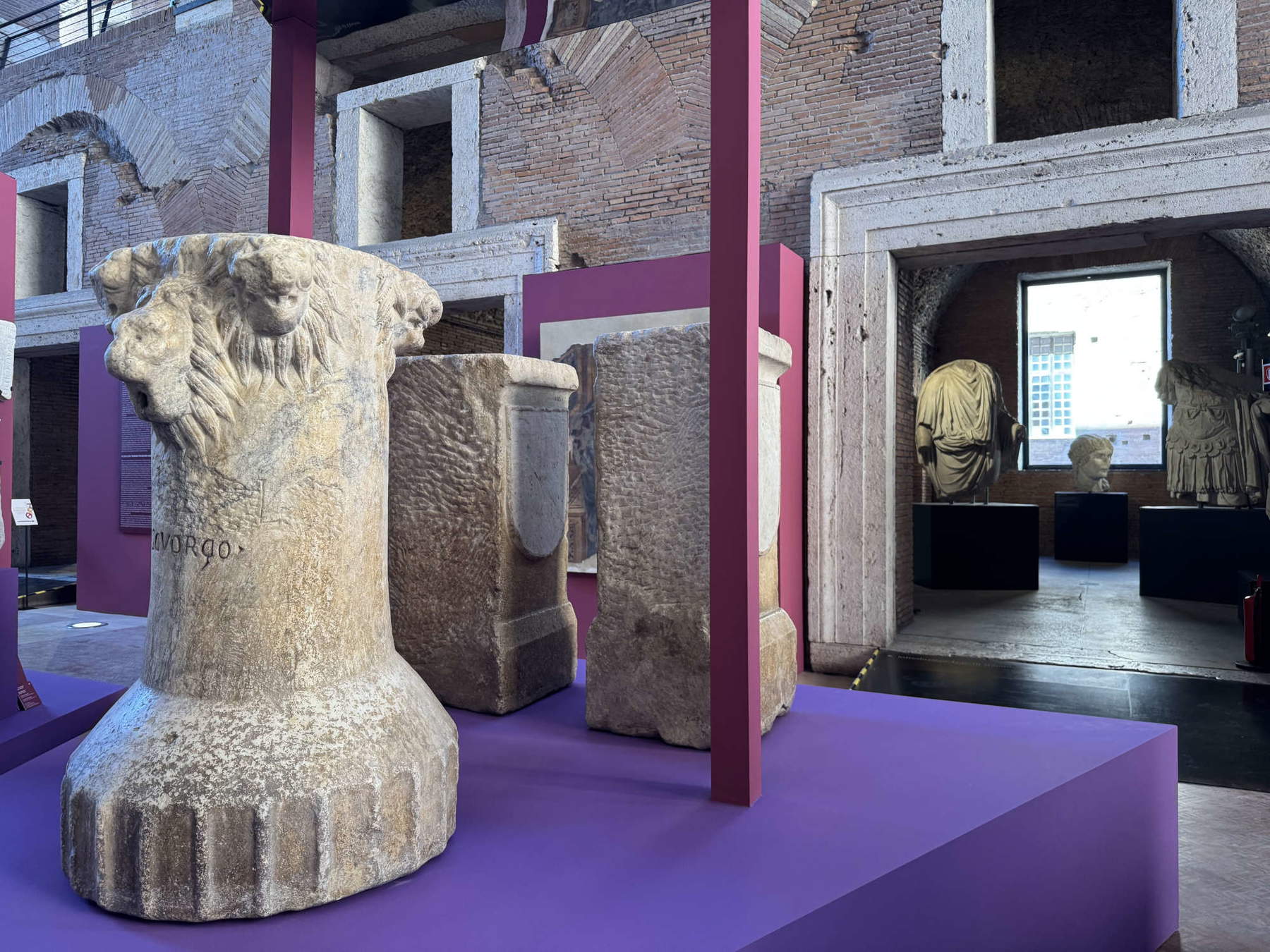
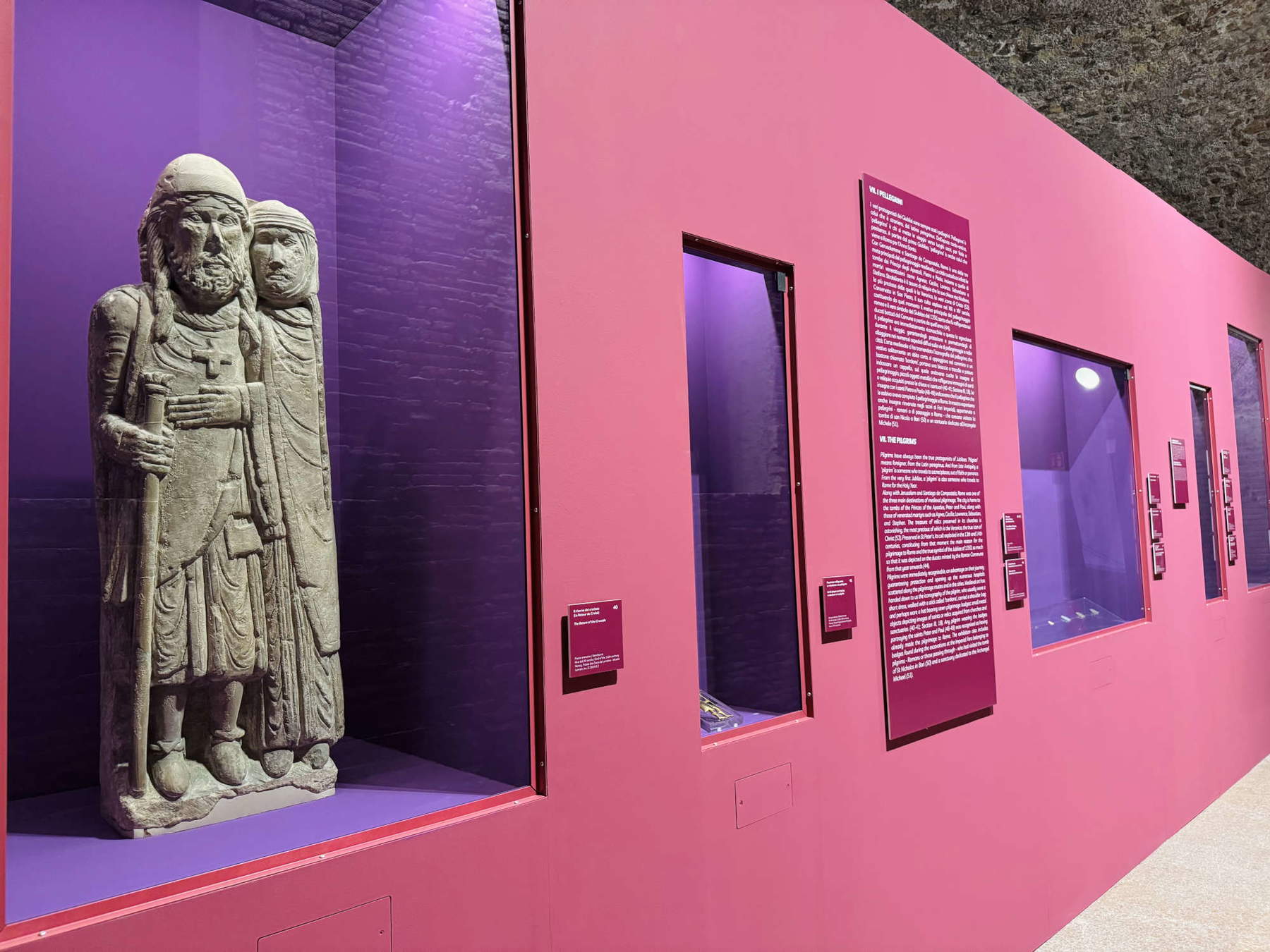
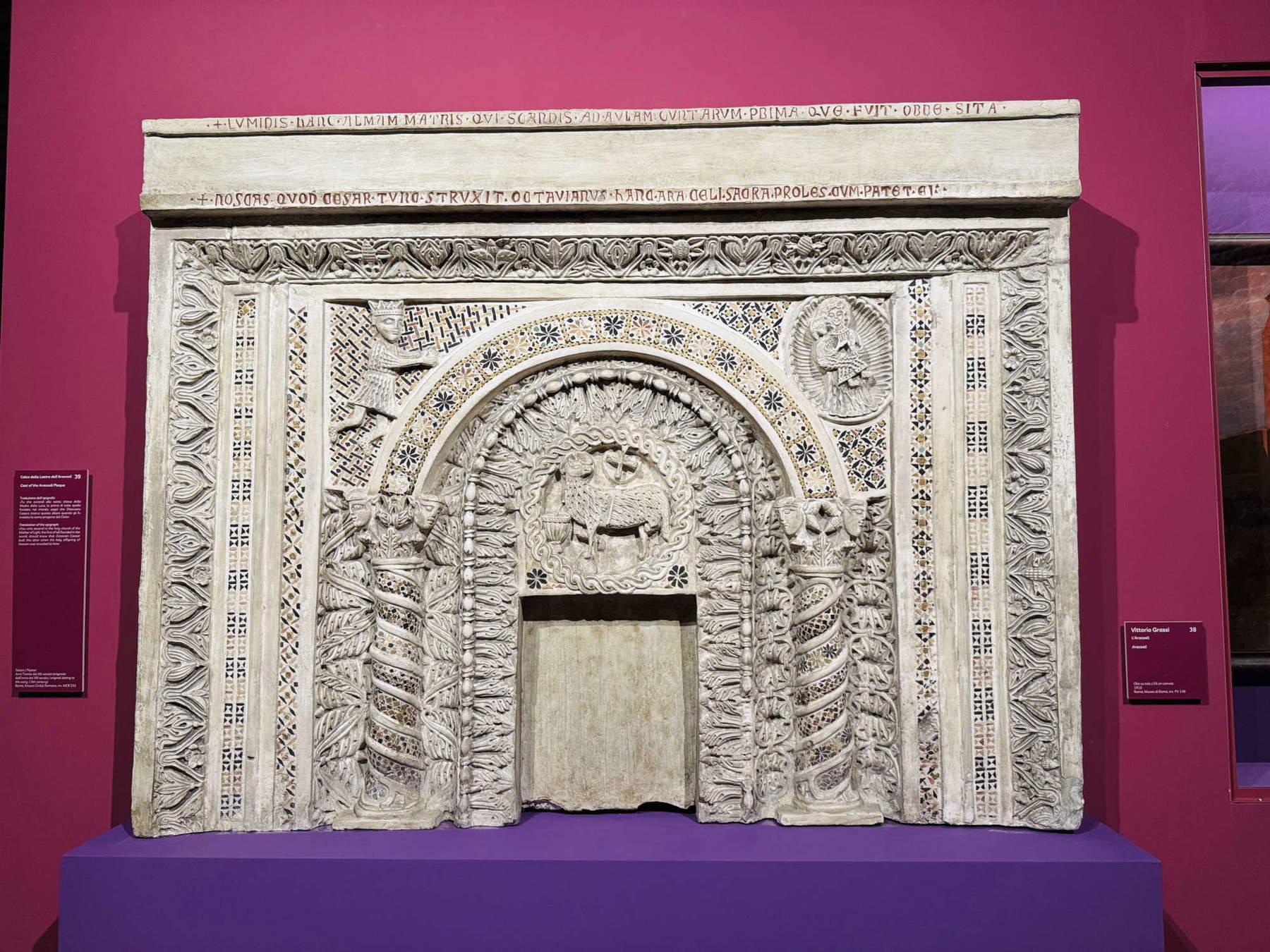
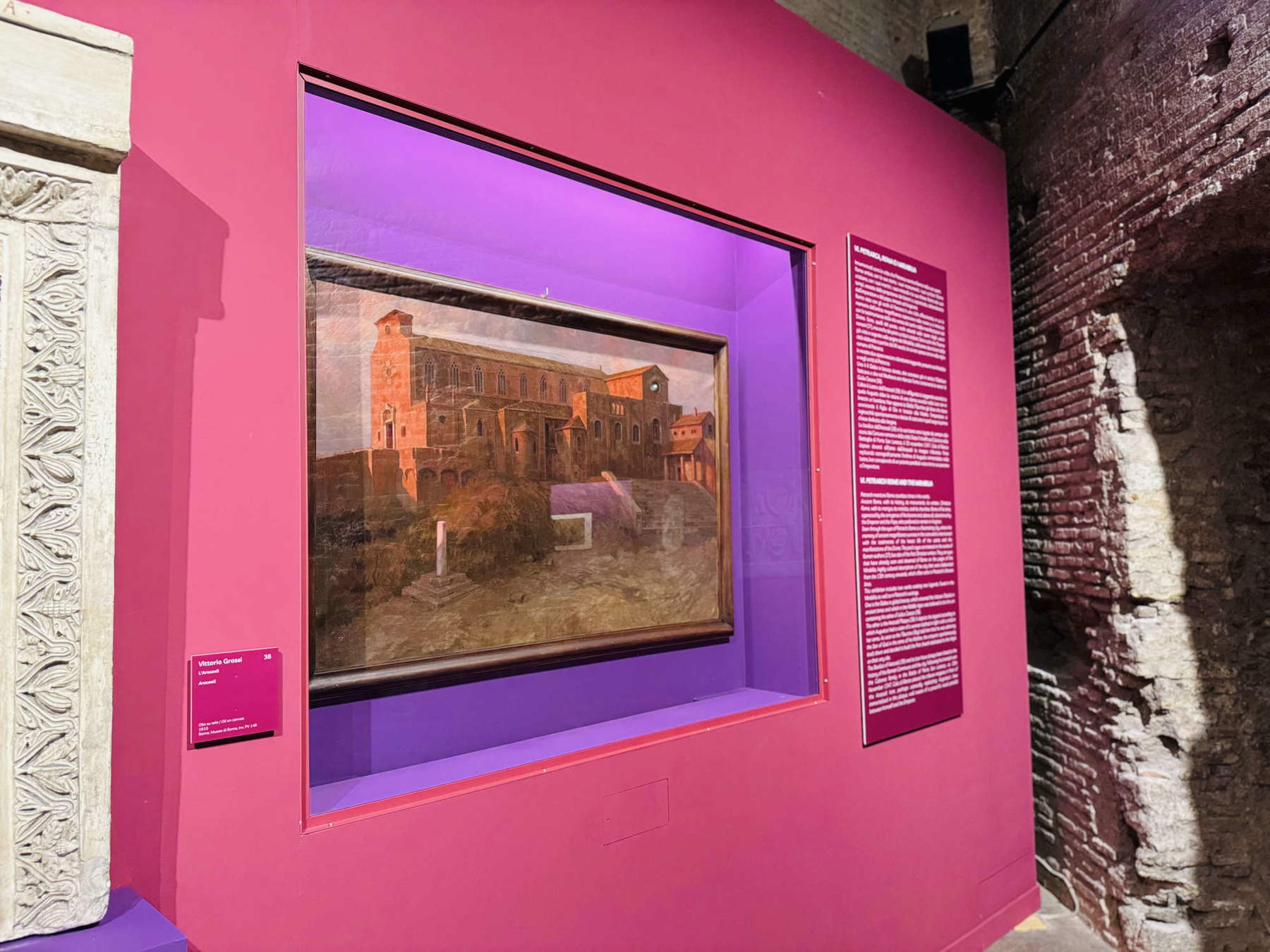
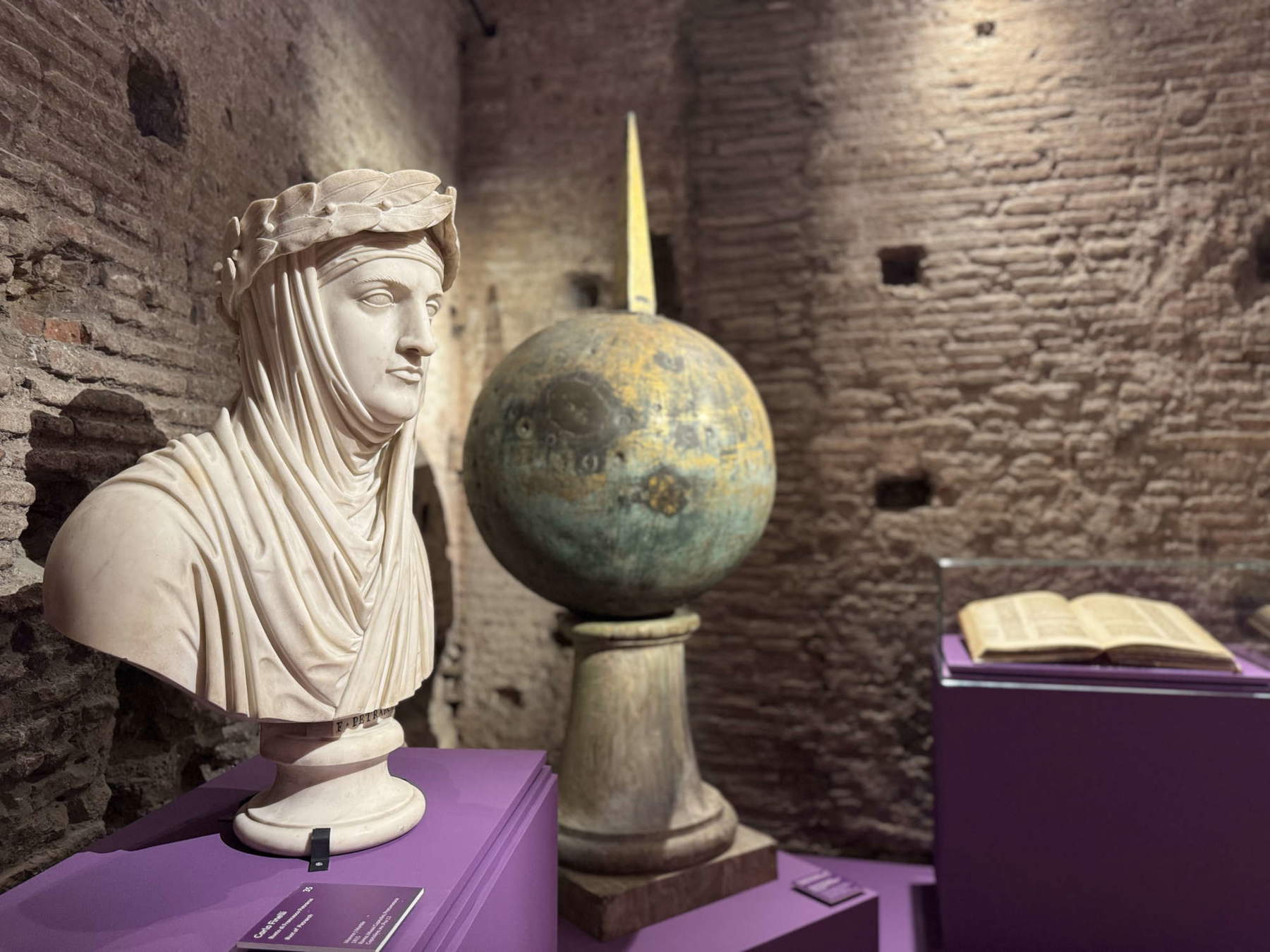
News of the “general pardon” in 1300 had an extraordinary echo, attracting pilgrims from all over the Christian world. Documenting this is the commemorative epigraph from Roccalanzona, in the province of Parma, displayed in the exhibition as direct evidence of the first Jubilee. With the death of Boniface VIII came the so-called “Avignon Captivity” (1309-1377), during which seven French pontiffs resided in Avignon, in the sumptuous Palais des Papes, a wooden model of which is presented. Despite the tensions and economic crisis of the period, artistic production was lively: an example is the mid-14th-century fresco of the Holy Trinity, from the church of San Salvatore delle Tre Immagini in the Monti district and now in the Museum of Rome, one of the oldest depictions of this iconographic theme, introduced by Pope John XXII in 1334.
The core of the exhibition is devoted to the Jubilee of 1350, with the election of Clement VI, to whom the City of Rome sent an embassy inviting him to return to the city and anticipate the new Holy Year. The pontiff did not bring the Curia back to Rome, but granted the Jubilee anyway, reducing the interval between celebrations from one hundred to fifty years. On display is a fragment of the epigraph of the statue dedicated to Clement VI from the hospital complex of Santo Spirito in Sassia, the only remnant of the now-lost sculpture.
The exhibition reconstructs the decisive role of the city of Rome in organizing the event. Nobility, people, ecclesiastical authorities and municipal institutions collaborated to welcome the pilgrims, ensuring an efficiency rare for the time. About thirty hospitals were active in those years, including that of St. James in Augusta, founded in 1339 on the initiative of Cardinal Pietro Colonna. On display is a cast of the founding epigraph from the Museo Storico dell’Arte Sanitaria in Rome.
The year 1348 marked a tragedy: the Black Death devastated the city. Among the most significant works is a marble statue of Archangel Michael, invoked as a protector against the plague, depicted in the act of piercing the dragon, on loan from the ancient Hospital of St. John Lateran. The following year, on the night of September 9-10, 1349, Rome was hit by a violent earthquake that severely damaged such iconic buildings as the Torre delle Milizie and the Torre dei Conti, both of which were deprived of their tops.
Parallel to the municipal embassy sent to Avignon, another delegation left under the leadership of Cola di Rienzo, a charismatic and controversial figure destined to dominate the Roman political scene. The exhibition devotes ample space to the tribune, represented by 19th-century works that illustrate his public parable and posthumous myth: Carlo Felice Biscarra’s large painting from the Royal Museums in Turin depicts Cola di Rienzo haranguing the people; a plaster bas-relief by Ettore Ferrari, from the National Gallery of Modern and Contemporary Art, shows the episode of Friar Acuto announcing to Cola di Rienzo the surrender of Francesco dei Prefetti di Vico; while a drawing by Palagio Pelagi, from the Carlo Virgilio Gallery in Rome, depicts him intent on explaining ancient epigraphs to the citizens. Also on display are two coins from the excavations of the Mausoleum of Augustus, struck by the Senate in the first half of the 14th century, and two denarii issued during the Tribunate of Cola di Rienzo, granted by the Vatican Apostolic Library.
One section is devoted to the dreamed and idealized Rome, the focus of the Mirabilia, the medieval legends taken up in the writings of Francesco Petrarca. These include that of the gilded bronze globe that surmounted the Vatican obelisk, believed to be the urn of Julius Caesar’s ashes, and the “Vision of Augustus” carved on the Aracoeli Slab, the frontal cast of which is on display. In front of that slab, Cola di Rienzo laid down his tribunician insignia after his victory over Colonna in 1347.
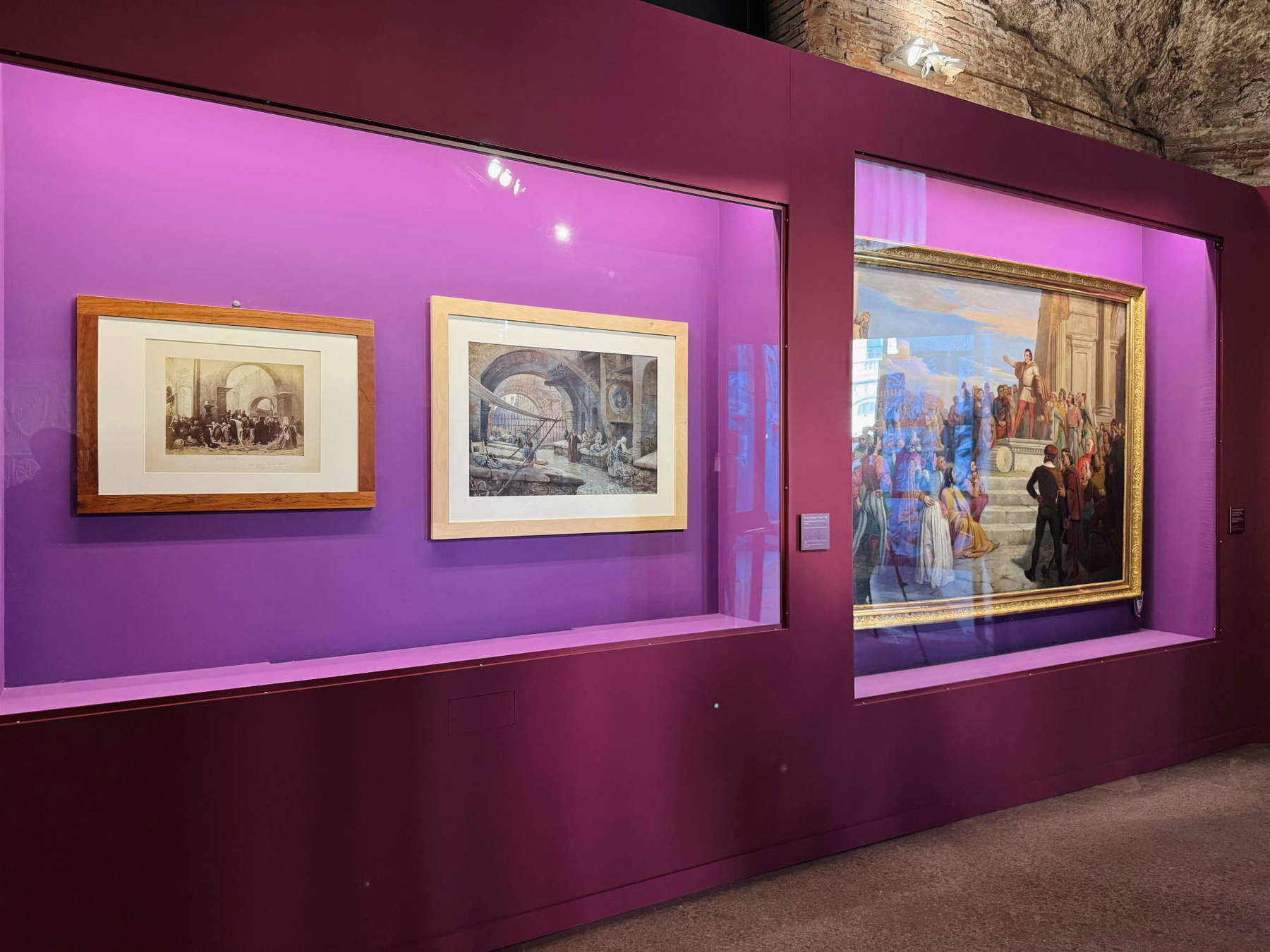
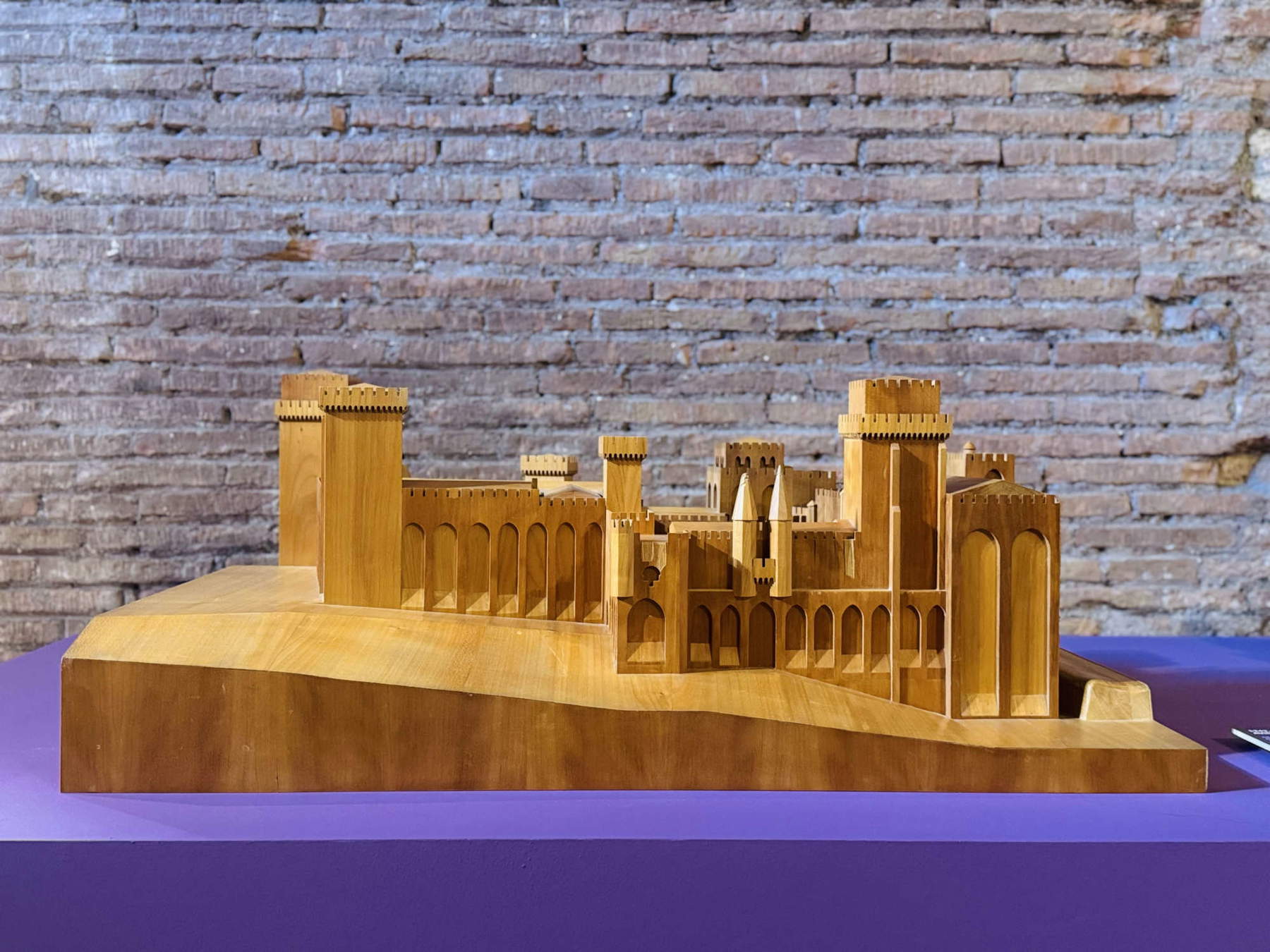
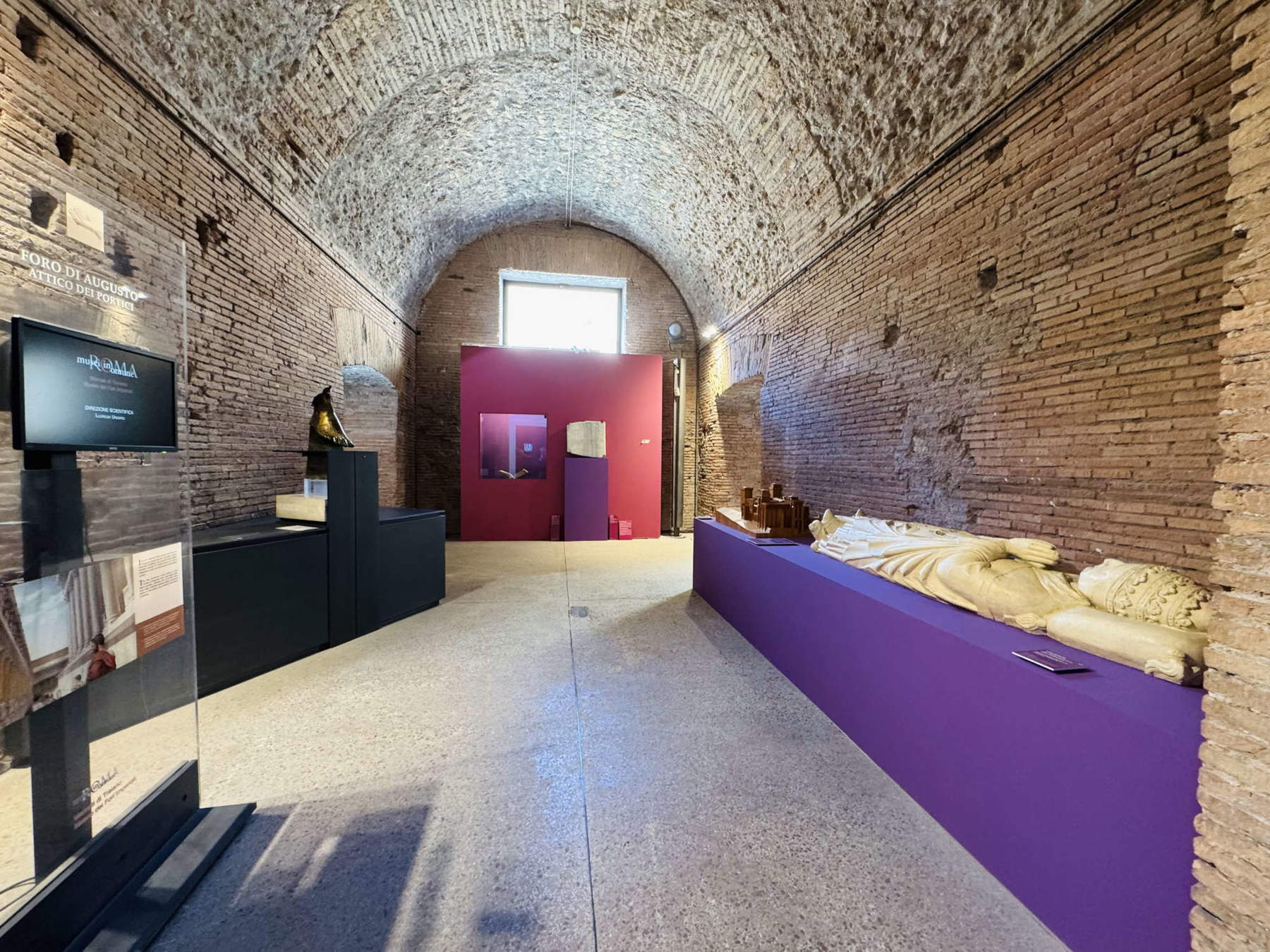
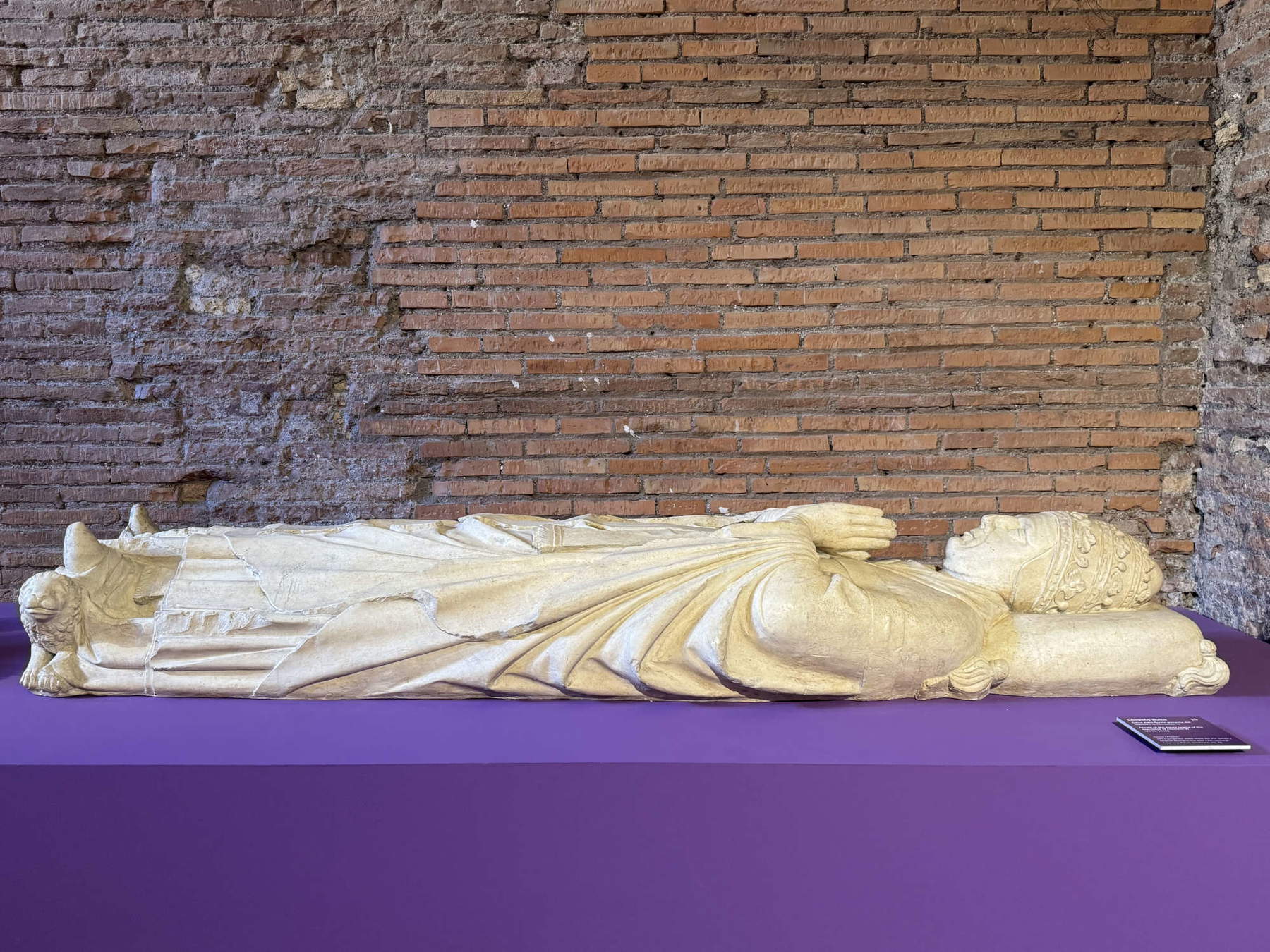
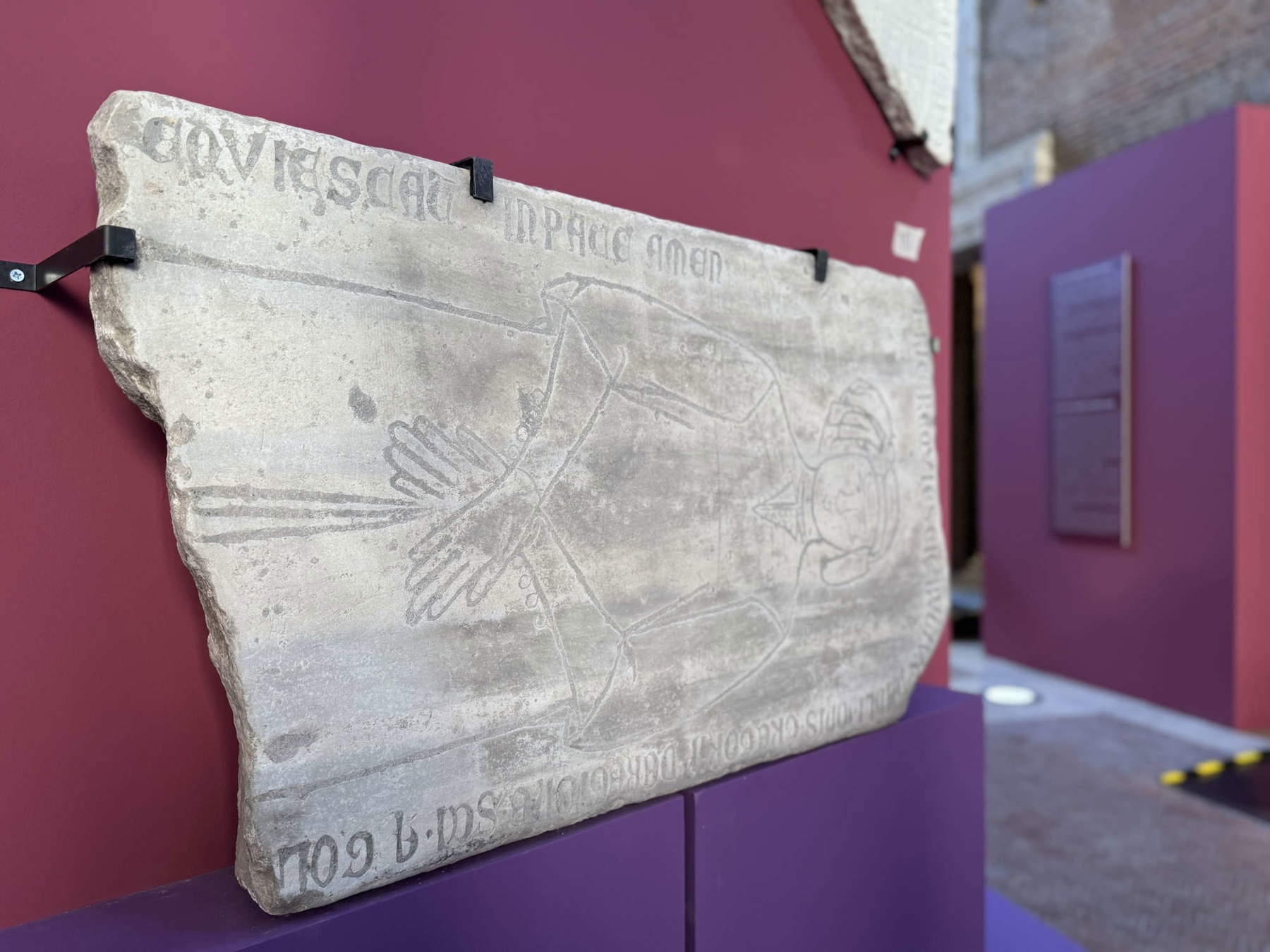
The pilgrims, the real protagonists of the Jubilee, traveled long journeys to reach Rome, recognizable by their short cloak, broadsword and saddlebag, as in the gilded bronze plaque from the Museo Nazionale del Bargello or the sculpture of the Return of the Pilgrim greeted by his wife’s embrace from the Musée Lorrain in Nancy. They carried pilgrimage insignia, small tokens of devotion purchased at shrines: among the rarest are two lead insignia from Chioggia with Saints Peter and Paul and those from the Imperial Forums with St. Nicholas and St. Michael.
One of the spiritual fulcrums of the exhibition is the theme of relics, the treasure of the Roman churches. Prominent among them is the Veronica, a “true icon” of the face of Christ, symbol of the Jubilee of 1350, already venerated in the 13th century and kept in St. Peter’s. She is depicted on a gold ducat issued by the Roman Senatus in the 14th century, from the Vatican Library, and in the statue of St. Veronica, datable to the same period, from the Musée des Beaux-Arts in Dijon. The exhibition also evokes the earliest debates on the Holy Shroud: the earliest mention appears in the Problemata of Nicholas of Oresme, bishop of Lisieux between 1377 and 1382, present with a rare 15th-century codex from the National Library of Naples.
The last section is devoted to the return of the pope and the Curia to Rome in 1377, with Gregory XI and St. Catherine of Siena. The saint, depicted in a 19th-century print from the Museum of Rome and in 18th-century models for the decoration of the apse of the church of St. Catherine of Siena in Via Giulia, kept by the Venerable Archconfraternity of the same name, accompanies the pontiff on his return to the city. The exhibition also evokes the history of the church of Santa Caterina a Magnanapoli, built in the 16th century in the area of the Mercati di Traiano, which housed a convent of Dominican nuns. From this phase remain the views of Ettore Roesler Franz, on display with a watercolor from the Museum of Rome in Trastevere.
Among the most significant discoveries presented to the public is an epigraph in three fragments commemorating a citizen’s donation for the reconstruction of two columns after the 1361 fire that devastated the basilica of St. John Lateran. The find, believed to be missing, was identified in the Capitoline deposits and presented for the first time on this occasion.
The conclusion of the exhibition evokes the end of the Roman Middle Ages and the beginning of a new era. Against the background of the schism between the Roman and pro-Avignon papacy, recomposed only in 1417, emerges the figure of Jacopa dei Prefetti di Vico, a young noblewoman given in marriage to Andrea Tomacelli, brother of Pope Boniface IX. Her sarcophagus, preserved in the Capitoline Museums, is displayed in the exhibition as a testimony to the private and political life of the time. With Boniface IX, who ascended to the throne in 1389, the era of the medieval commune came to an end: the pontiff reestablished papal authority, ending the communal autonomy that Rome had gained in the previous century.
The exhibition 1350. The Jubilee without the Pope thus offers an overall look at a Rome marked by dramatic events but also by extraordinary cultural vitality, restoring through works, documents and testimonies the face of the city that, even in the absence of the pope, knew how to make itself the beating heart of Christianity and the crossroads of art, faith and history.
 |
| What Rome was like in 1350: at Mercati di Traiano the exhibition on the medieval city |
Warning: the translation into English of the original Italian article was created using automatic tools. We undertake to review all articles, but we do not guarantee the total absence of inaccuracies in the translation due to the program. You can find the original by clicking on the ITA button. If you find any mistake,please contact us.